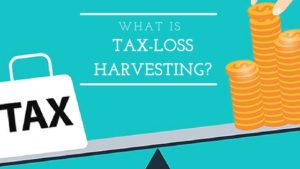“Don’t Let the Tax Tail Wag the Investment Dog”
If you are like many investors you have a position or two in your portfolio that you thought had ‘unlimited potential’ but unfortunately have delivered results that are anything but that! You have most likely pushed them out of your mind but you get a monthly reminder when you receive your account statement. Typically investors chalk these up as ‘a lesson learned’ and hope that the stock will get back to break even, but is that the best approach? What if there was a silver lining that could actually help your portfolio and manage your tax liability?
What is Tax-Loss Harvesting?
Tax-Loss Harvesting is a term that is often used this time of year by the media and Financial Services Industry. While it is tossed around frequently we find that investors often don’t understand it, and more importantly, how it can benefit them. Tax-Loss Harvesting is the practice of selling positions in taxable accounts at a loss, then using that loss to offset realized gains in other positions. This year presents the perfect opportunity to utilize this concept as the market continues to move higher and break records.
The key to an effective tax-loss harvesting strategy is to evaluate what you own and why you own it. Look closely at positions that have lost value and those that have increased in value, as they will impact your allocation. If this strategy is incorporated properly it can help you rebalance your portfolio while also managing your tax liability at the same time. Here are a couple key points to keep in mind…
Estimate your tax liability
Short-term capital gains (less than one year holding period) are taxed at your marginal tax rate. Currently, the top tax rate is 39.6% but if you are subject to Net Investment Income Tax (NIIT) and you also consider state and local taxes, some individuals will be as high as 43.4%. Long-term (over one year) capital gains offer a much lower tax rate at 15% for the majority of investors (joint income $75,951 – $470,700 and single income $37,951 – $418,400) and can be at zero if your taxable income is below those levels.
Harvest Losses to Minimize Taxes
Once you have a sense of how much you owe in capital gains you can look at what you should consider selling at a loss. With our clients we look at investments that are no longer a good fit with our strategy and overall allocation. You can also look at positions that are down but can be easily replaced by a similar investment to keep your portfolio balanced properly. One general rule to keep in mind with the current tax code is short- and long-term losses must be used to first offset the same type of gain. In other words, a short-term loss will be used against short-term gains, then the excess can be applied to long-term gains. If you have realized more losses than you can offset with gains, you can apply up to $3,000 a year in losses to reduce ordinary income and carry the balance forward into future years.
Wash Sale Rule
Here is the curveball that the IRS throws into tax loss harvesting. If you sell a position at a loss you cannot buy the same position or ‘substantially identical’ security within 30 days, otherwise the loss will not be allowed. If you sell something that you feel has good long-term potential, look for a similar stock or ETF that targets the same industry or market-cap. The other option is to buy the position back after 30 days have passed. One other important factor to consider is you do not have to sell all of a position – consider selling a portion of it if it still warrants a place in your portfolio.
Utilize Tax-Loss Harvesting
The investment community is always coming up with new terms and lingo. Think of tax-loss harvesting as strategic rebalancing within your portfolio. If you have a well-diversified portfolio there will always be some positions that are performing well while others might struggle, depending on the markets and economic environment. We rebalance our client’s portfolios throughout the year, looking for opportunities to diversify and manage taxes effectively.
If you need help analyzing your portfolio and implementing a tax-loss harvesting strategy, please contact us. When taxes are involved we encourage investors to work with a CPA as everyone’s tax situation is unique and deserves personal attention. We work closely with a CPA firm to deliver unparalleled service to our clients. Let us know how we can help!

